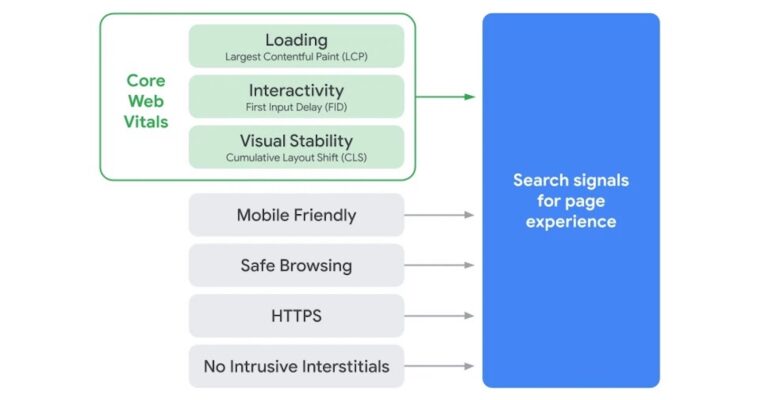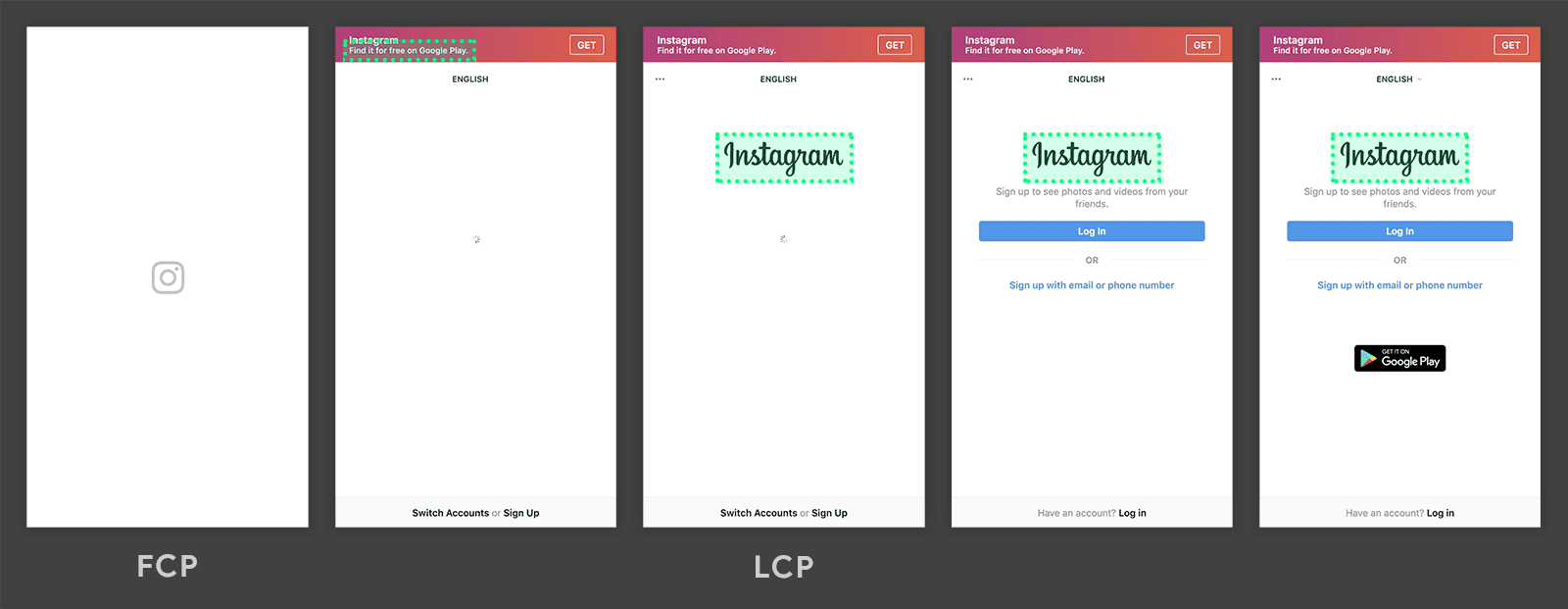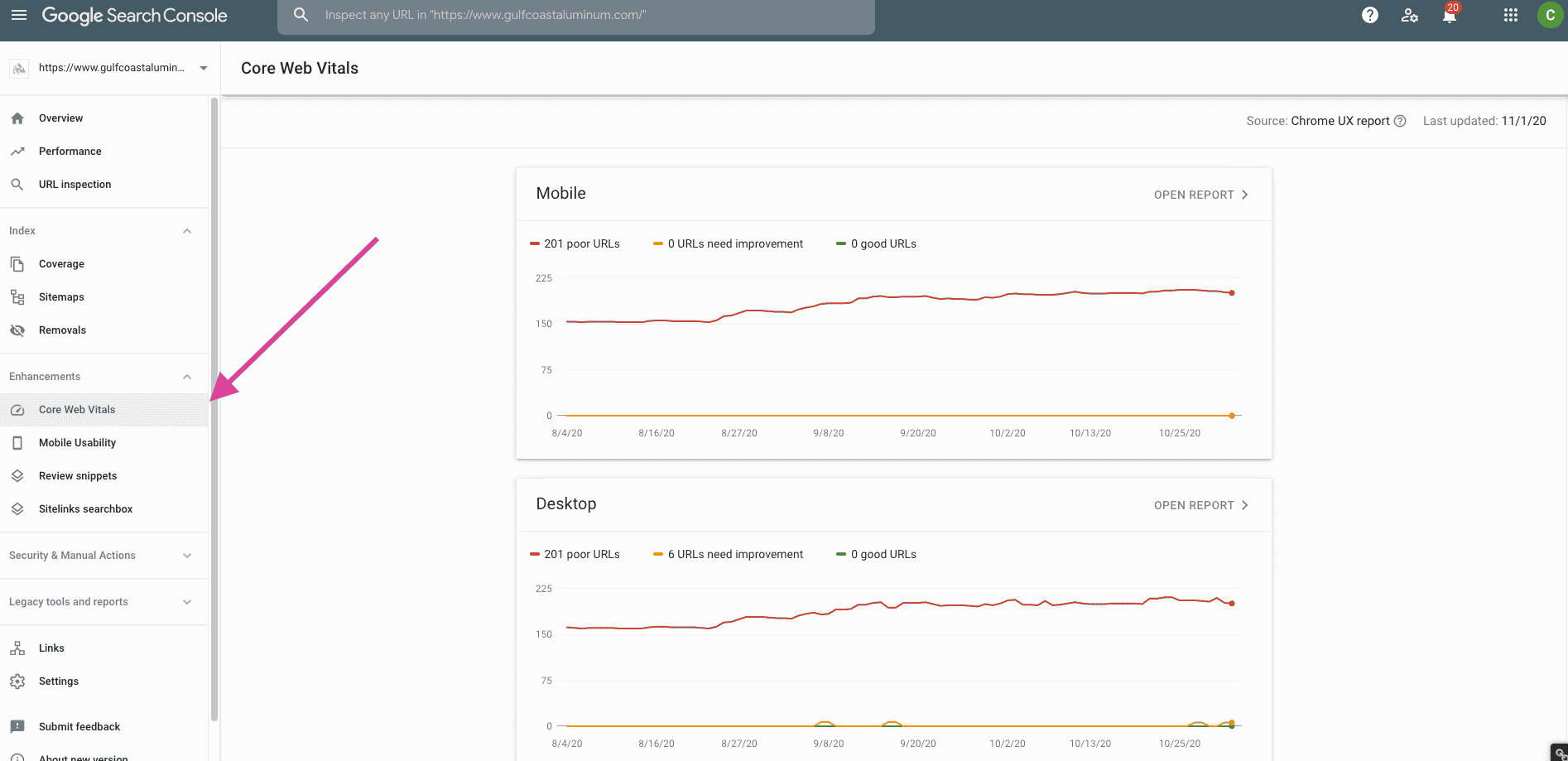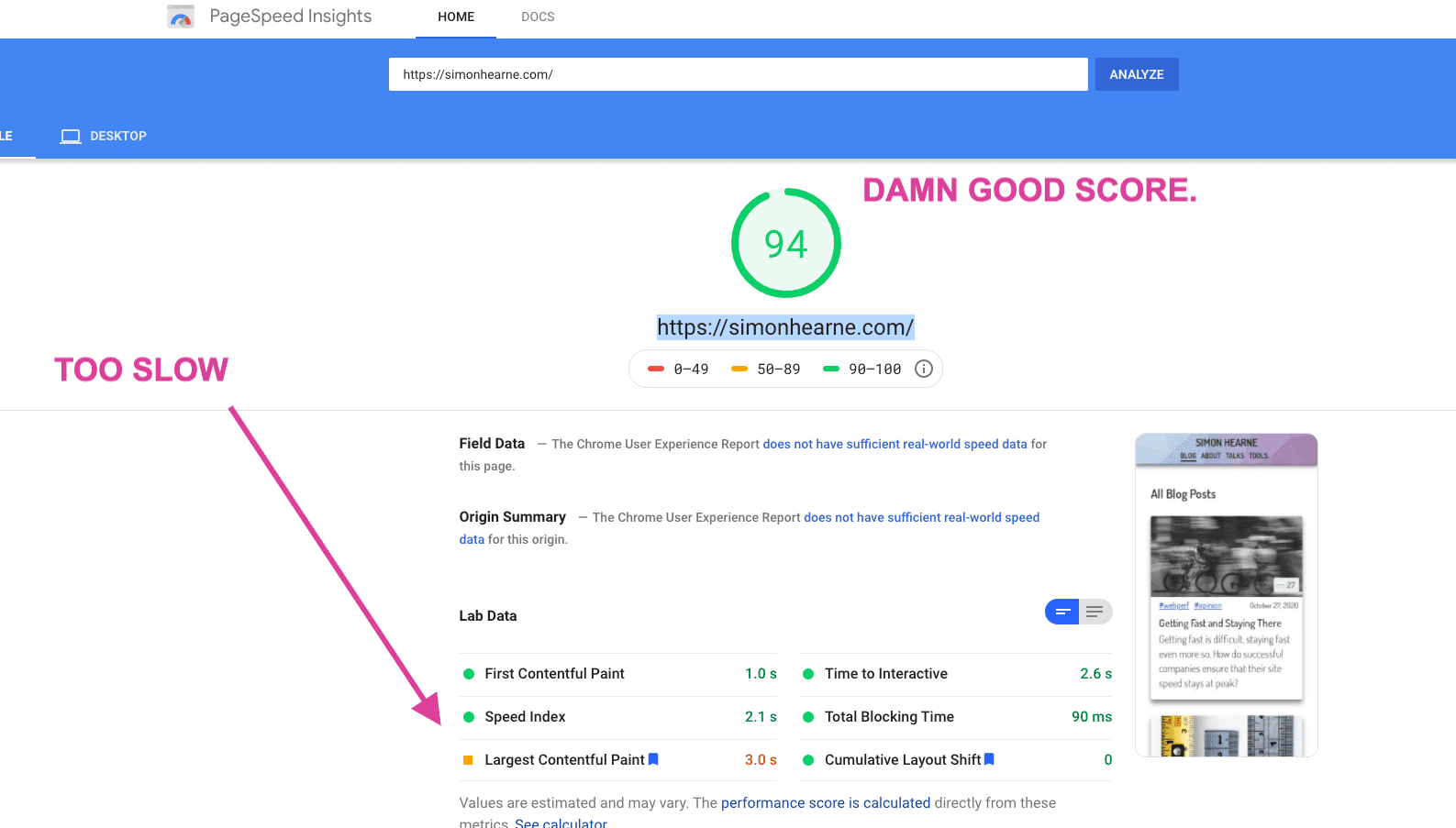Google has been dropping mentions of 'core web vitals'. You've probably seen those words around if you've found your way here. And like me you're probably going 'wtf', time for another game.
So I figured I would make this post sharing what I know about it and updating it as time goes on.
What we know.
...
Google will be using Core Web Vitals As a Ranking Signal In the near future.
In May of 2020 Google Chrome Team dropped a blog post on chromium.org introducing a "new program" called Web Vitals to "provide unified guidance for quality signals that, we believe, are essential to delivering a great user experience on the web."
Nothing was said about SEO rankings at that time.
Then a few weeks later, Google Webmaster Central Blog made a post anoucing they would be using it to rank websites in search results.
Today, we’re building on this work and providing an early look at an upcoming Search ranking change that incorporates these page experience metrics. We will introduce a new signal that combines Core Web Vitals with our existing signals for page experience to provide a holistic picture of the quality of a user’s experience on a web page.
It's on!
However... due to COVID, they delayed it until next year (2021) and said they would provide "at least six months notice" before it is rolled out. Whew. How nice of them. We got time to prepare!
What is Google goal behind these metrics?
Their goal ultimately focuses on user page experience. Pages should load quick and interact quick, on all devices. This makes logical sense in the big picture. Internet users, myself included, don't like to wait around. A 2018 study by google found that 53% of mobile user leave a site that takes longer than 3 seconds to load -- I'd venture to bet that (53%) number is even higher now in 202.
While the SEO crowd may not like it, Google wants wants to show 'the best' sites, not SEO wizards manipulate to the top.
What are the Core Website Vitals?
There are 3 'vitals' that that have been relayed.

Notice how in the diagram, provided by Google, the Core Web Vitals are on top of the other signals. Just an observation.
Let's break them all down.
Largest Contentful Paint (LCP).
This measures loading performance, but not total load time. Instead they're looking to see when a user gets the an actual rendering of the site that is 'visually useful' (note that term).
By Googles measure they are looking for the largest element, which is often near the end of loading, but not always. As you can see from the example below, the largest element on the Instagram mobile web is the logo.

The time they have set as a 'LCP' is 2.5 seconds.

Other terms you might hear around load time are Time To First Byte (TTFB) and first contentful paint (FCP).
TTFB is already likely a search ranking factor, as Google recommends it under 200 milliseconds. This is simply the time it takes a server to respond and I would say that any website that doesn't respond in that time likely to have problems.
First Input Delay (FID)
In the last section I used the term 'visually useful'. That's only a part of the user experience, the other part is 'when can a user actually interact with the content'.
Example of a user input might be clicking button to trigger a pop up, or opening an accordion menu.
Like LCP Google has specific what is an acceptable FID is.

Cumulative Layout Shit (CLS)
This vital measures how stable your content is... in other words does your content move around a lot?
What they're trying to establish is whether links/fields (and other UI elements) remain in the same place. Elements that move around a lot typically create a poor user experience; like in-page popups or a button that moves after being clicked.
This isn't measured in time but rather in a score. In Google's words "To calculate the layout shift score, the browser looks at the viewport size and the movement of unstable elements in the viewport between two rendered frames. The layout shift score is a product of two measures of that movement: the impact fraction and the distance fraction (both defined below)."
How to see your own Core Web Vitals.
You can already view your own Core Web Vitals in 2 ways.
First using Google Page Speed Insights.

You can see the 3 Core Web Vitals displayed clearly on the Page Speed Reports. Just above that is a notice whether your site passes them, on average, over the last 28 days using Google Chrome Data.
You can also find some data in Search Console as well.

A tab of the left opens up the Core Web Vitals report, which will drill down and show you LCP by page... if you have enough traffic. Low traffic sites will show nothing.
The standards are high; most sites don't stack up.
If you've taken a look at your web vitals, you've probably thought "well shit". Beyond my own sites, I've popped in a few other websites and nearly all of them have the "does not pass" notation in PageSpeed insights.
Actually to find one that does, I had to go to deep... into the competitive field of sites ranking for SEO and speed terms.
Backlinko.... passes.
Moz... does not pass.
and then there was a small blog by a 'Web Performance Architect' named Simon Hearne. From reading the content on his sites, he's definitely a pro. His is didn't have enough traffic to generate a pass/does not, but even his LCP was not up to stuff.

With experts not meeting the threshold, how practical is this stuff even?
I'll be dipping my toes into improving my metrics soon.
What we need to know.
So far there are 2 burning questions I have... beyond how practical is it to meet these standards.
What kind of web hosting will be able to meet the standards?
Likely achieving these metrics is going to requiring being on a high quality VPS. Digital Ocean is among the fastest I've tested.
Will it even be possible on a shared hosting account? I've spent extensive time testing my sites on A2 shared hosting and found they are VERY fast for a shared host, nearly as a fast as Digital Ocean.
You can see a comparison between one of my websites on Shared A2 Hosting & Hostgator in this video.
How much of an impact will this have on rankings?
Somethings move the needle and somethings do not. If I'm going to sink the time, effort, and money it to it, it would be nice to know how much of an impact it will have on rankings.
That said, I will still probably do it anyways, or at least push towards the guideline numbers. I don't worry at all about 'off-page' seo' - I stick to a mantra of making my sites the best for the user, and promote them to real users.
... it would still be nice to know though.
